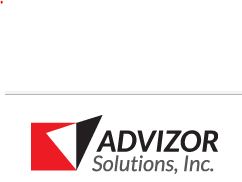Predictive analytics uses many techniques from data mining, statistics, modeling, machine learning, and artificial intelligence to analyze current data to make predictions about future.
For the success of any business data; facts and figures, play a vital role. The data is usually the past performances, past and present trends and future expectations. With the help of predictive analysis, the future data can be determined, i.e. future performance of the business can be realised. The data is not hundred percent accurate, but it is good enough to formulate the present strategies based on that.
Based on the market trends and business tactics, the software models the data in a feasible form, like tables, graphs and pie charts. The relation between various sources and strategies is determined; pattern is identified and used for predictive analysis. Data miners use R language today extensively, very few software support this language, but the software that we have mentioned here do.
Banking, financial industries, retailers, manufacturing and insurance companies use predictive analysis for deciding the business tactics and reducing the risks. If you are one of them, this software is a no excuse for you.
Why is Predictive Analysis software important?
Detecting fraud
Combining multiple analytical methods can improve pattern detection and prevent criminal behaviour. As cyber security becomes a growing concern, high-performance behavioral analytics examines all actions on a network in real-time to spot abnormalities that may indicate fraud, zero-day vulnerabilities and advanced persistent threats.
Optimizing marketing campaigns
Predictive analytics are used to determine customer responses or purchases, as well as promote cross-sell opportunities. Predictive models help businesses attract, retain and grow their most profitable customers.
Improving operations
Many companies use predictive models to forecast inventory and manage resources. Airlines use predictive analytics to set ticket prices. Hotels try to predict the number of guests for any given night to maximize occupancy and increase revenue. Predictive analytics enables organizations to function more efficiently.
Reducing risk
Credit scores are used to assess a buyer’s likelihood of default for purchases and are a well-known example of predictive analytics. A credit score is a number generated by a predictive model that incorporates all data relevant to a person’s creditworthiness. Other risk-related uses include insurance claims and collections.
Features:-
- A clear business objective - The first priority of any predictive analytics project is a clear understanding of the business objective being supported. Predictive analytics has been applied to customer/prospect identification, attrition/retention projections, fraud detection, and credit/default estimates.
- Defined performance metrics - A critical factor for successful development of predictive analytics projects is a well-defined set of business performance metrics specific to the organization's business objectives.
- The specific behaviour of interest - This behavior of interest is what we are coding as the "desired output" variable in our historical data. It represents whether or not the behavior was displayed for each record in our data set.
Benefits:-
- Predictive analytics practices help companies in three key areas: minimizing risk, identifying fraud and pursuing new revenue opportunities.
- It enables companies to identify and respond to new opportunities more quickly.
- The analytics approaches are focused on helping companies glean actionable intelligence based on historical data.




 Visit Website
Visit Website










